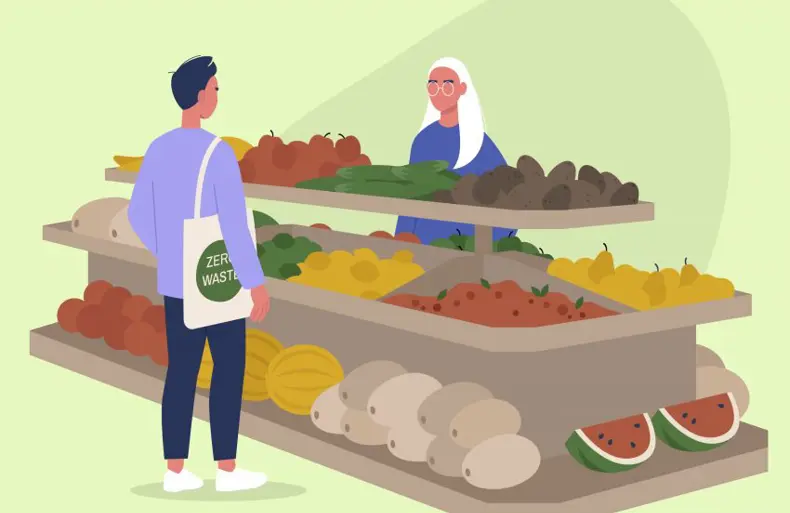Blog | Investment | Retail
Will food and grocery remain at the core of retail investment post-Covid?

The pandemic has proved a boon for supermarkets and convenience stores who have benefitted from their essential retailer status, as shoppers moved a greater proportion of their eating and drinking back into the home following the closure of pubs and restaurants. In the 12 weeks to 21 February 2021, take-home sales in the UK rose by 12.5%, according to Kantar.
However, the landscape has changed. With the reopening of restaurants, pubs, bars and cafés as well as the lifting of some of the travel restrictions, consumers have embraced their newly found freedom with an opportunity to buy food and drinks elsewhere, leading to a decline in supermarket sales. What does the return to normality mean for bricks-and-mortar supermarkets and convenience stores? Will they continue to be seen as attractive investments and what role will online retail play in shaping the sector?
The rise of online
According to research conducted by Mintel, in December 2020, 59% of Brits identified as online shoppers, doing some, most or all of their grocery shopping online, whilst data from AHDB suggests that at the peak of the pandemic in
February 2021, online channels accounted for 15.4% of all grocery sales in the UK. However, thanks to the rapid rollout of vaccines across the UK and the easing of social distancing restrictions, many more buyers have resumed their pre-pandemic habits and returned to in-store shopping. Nielsen IQ’s data shows that during the first four weeks of August, online grocery sales declined by 10%, while till sales in the grocery sector increased by 1.1%, as visits to physical stores got a 12% boost. Kantar’s findings support that, showing that just over 20% of the population bought groceries online in the 12 weeks to 17 August 2021, the lowest level seen since October last year. All of this data suggests that many of us have already resumed our pre-covid habits, and despite the increase in online sales recorded during the pandemic, in-store shopping remains the go-to option for many – good news for anyone considering investing in the sector.
The allure of discount chains
However fast and easy online shopping may be, it can not beat the convenience of a local shop, where you can buy a pint of milk without having to pre-book a delivery slot. According to Kantar, Co-op, the biggest convenience store operator, and Iceland, known for its affordable frozen pre-prepared meals and vegetables, as well as independent grocers, have all seen dramatic increases in sales during the pandemic, experiencing double-digit growth compared
with 2019 as more people ate at home and shopped locally. Given flexible working is firmly on the agenda for many businesses, it would be reasonable to expect local supermarkets and convenience stores to thrive, albeit at a slower pace. Waitrose, Tesco, Aldi and Lidl have all seen their market share grow. The latter two deserve a special mention. Targeting value-oriented consumers, who want low prices, a swift shopping experience with a basic service and a limited range of products to choose from, they have thrived during the pandemic. Discounters have been able to offer lower prices as a result of having fewer products, which helps to save space and time, reduce staff costs (many products are displayed in the packaging they were delivered in reducing the need for shop-floor staff) and lightning-fast cashiers. At a time of uncertainty and economic precarity, their proposition resonates with a larger number of consumers, which consequently enables them to continue opening new branches.
Convenience that’s worth paying for
Convenience stores have enjoyed sustained growth since the outbreak of the pandemic. Typically situated next to transport nodes such as stations, airports or roads, they are often easier to access. This format has a number of advantages over traditional supermarkets, including location, shorter wait times and longer opening hours. As a consequence, they usually charge higher prices than supermarkets. This is partially due to higher input costs (rent, cost of goods) and the fact that people will readily pay a premium for convenience, especially in the absence of other options nearby. For this reason, convenience stores will continue to play an increasingly important role in the grocery market landscape, helping Tesco, Sainsbury’s and Co-Op retain and increase market share at a time they are facing serious competition from Lidl and Aldi.
A safe haven during turbulent times
Convenience stores and supermarkets are particularly attractive from an investment point of view, offering buyers the opportunity to purchase well-located stores let to secure, well-established and reputable businesses on long leases. These long leases typically benefit from CPI or RPI linked rent reviews, protecting their rental income against inflation. Convenience stores allow smaller investors to get a foothold into the market. Most recently, Allsop helped to sell a ground floor unit let to Sainsbury’s in Hackney Wick on a 15-year lease, with a break at year 10 with five-yearly rent reviews linked to RPI subject to a 3% p.a. cap. The pool of buyers for Hackney was impressive and varied, competition for the asset remained fierce up until the very end. We received interest from a number of local and overseas investors, property companies and even a couple of celebrities. Since then, the market has continued to strengthen with record yields expected to be achieved over the forthcoming quarter. Allsop is well positioned to advise investors, however big or small, on the disposal or acquisition of retail property across the UK thanks to our market knowledge and experience, as well as an extensive network of contacts – your very own convenience store may be just a phone call away.

A graduate's insight into the 2024 Alternative Market
In the dynamic world of real estate investment, the alternative sector continues to carve out its unique niche, offering a di...

Why high net worth individuals continue to be attracted to the UK Real Estate?
Despite some challenging financial circumstances in the UK, the country’s real estate sector continues to attract investment ...

Commercial Investment National Industrial Market Update
Industrial / logistics remains the dominant sector across all commercial markets, a trend we expect to continue through 2024 ...

Commercial Investment National Office Market Update
Allsop sees this as an opportune moment to enter the market before further base rate reductions potentially drive-up competit...